






Agriculture & Industry
The Walcha district has a temperate climate which, combined with the soil type, rainfall, altitude and pastures, provides an ideal foundation for our highly regarded grazing industries.
The Walcha district is well known for its ability to establish and grow strong, healthy pastures and produce high quality cattle and sheep. It’s suited to almost all types of grazing pursuits however wool and prime lamb production together with cattle breeding and fattening are the major grazing activities.
WOOL
Wool production has made the Walcha area famous throughout Europe and Asia. Our wool has for many years been sought after and purchased by the world’s top spinners for use in the manufacturing of the finest quality cloths and garments. Our climate is ideal for high yielding, bright, fine wools with evenness of tensile strength throughout the staple.
Many of Australia’s finest merino studs and woolgrowers are located in the Walcha Shire, these include Nerstane, Shalimar Park, Westvale, Petali, Miramoona, Mirani, Yalgoo, Ruby Hills, Auchen Dhu, Netherton and Karori,. Indeed Auchen Dhu, in 1996, demonstrated the strength of breeding in their flock by winning the three major Australian Merino Breeding Championships with their ram Auchen Dhu Minister. And a few years later Walcha was in the spotlight again, with a local producer being recognised in 2014 for producing the worlds finest ‘Paddock Grown’ bale of wool at 11.2 microns.
Walcha Shire boasts a merino flock of approximately 760,000.
PRIME LAMB
Prime lamb production is generally confined to the more productive higher rainfall areas of Walcha. Lamb produced in the Walcha Shire satisfies the demands of Sydney, Brisbane, coastal and export markets.
Predominantly British bred (Poll Dorset and White Suffolk) sires are selected for carcass quality and performance. The vast lush green pastures of the New England make for a sweet, tender, mild tasting product.
As it is generally advised to eat seafood at the coast, it is also highly recommended to try some lamb whilst in Walcha.
BEEF
Beef production in Walcha is centred on several enterprises. Firstly there are cattle breeders who produce weaners for the annual autumn weaner sales, these calves are sold to specialist cattle growers, fatteners and feedlots.
Then there are the traders, who simply trade stock, purchasing weaners or younger, lighter calves and bring them up to a heavier weight suitable for processing.
And some farmers chose to carry their stock through themselves for an extra year to take advantage of the heavier value-added product.
Breeding cows are often grazed with sheep and their calves are dropped each spring following the colder months, this is general practice in Walcha and the New England region due to the harsh winter conditions. Spring calving enables a higher growth rate, swift weight gain and lessens animal stress when they’re most vulnerable.
Specialist cattle enterprises are generally confined to the higher rainfall areas of the Shire where strong soils and pastures combine to produce a high quality, grass fed product.
Angus & Hereford breeds (which are of British origin) dominate the foundation of most herds in the Walcha district, they are the breeds which perform better under the local conditions and are favourable to meat buyers for the higher eating quality.
There are approximately 85,500 head of cattle in the Walcha shire.
DAIRY
Recently dairy has had a rebirth to the district, dairies had previously existed from the 1800’s up until after WWII with many Yarrowitch soldier settlement blocks used for dairying and Walcha even had a short-lived butter factory in the early 1900’s.
The (new) Walcha Dairy was established in 2009, on a property which was previously used for beef production. A sophisticated, modern milking shed was erected, new pastures were sown and fences rebuilt as the nutritional requirements and paddock management varies greatly between beef and milk production.
The 80-stand rotary dairy is fully computerised, it records milk production and conductivity with the ability to detect any abnormalities like mastitis, then automatically drafting those cows into a separate pen. Milk production is heavily linked to feed requirements and as the cow steps onto the platform, its radio tag is read and each animal gets a tailor-made ration. The grey-water from the dairy is irrigated back onto the paddocks on a fairly regular basis, enabling a nutrient rich hydration of the pastures and water conservation through recycling.
A far cry from the capabilities of the dairies of yesteryear!
The Walcha Dairy milks 700-800 cows and is capable of producing five million litres per annum.
TIMBER
The timber industry is deeply embedded in the history of Walcha and still contributes greatly to the local economy.
From the early years of harvesting of enormous Cedar trees (known as ‘Red-gold’ due to its value) in the isolated eastern gorge country to hardwoods supplied for building and infrastructure and the NSW State Forest pine plantations that still exist today.
A timber mill was operational in Walcha until 2010, the closure of the mill gave reason for great concern at the time as it was one of Walcha’s largest employers and many local trucking companies, also were large employers, were thought to be under threat. However resilience is instinctive and Walcha is far from crippled today. The trucking companies live on, you will still see plenty of ‘Timber Jinkers’ on the roads today.
FREIGHT & TRANSPORT
The timber and agricultural industries created the need for a freight industry, several companies have been established over the years with many having grown and thrived. There are several large trucking companies carting everything from livestock, wool, timber, large machinery and general logistics, transporting goods nation wide.
A substantial bus company is also based in Walcha.
Having the transport companies based locally, is heavily reliant on having a Roads and Maritime Services, RMS (formerly RTA) office based in Walcha and of course support from local producers and operators.
The freight & transport companies would be one of Walcha’s largest employing industries.

